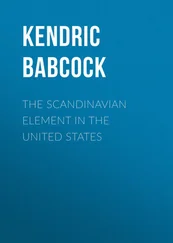Hubert Bancroft - The Native Races [of the Pacific states], Volume 1, Wild Tribes
Здесь есть возможность читать онлайн «Hubert Bancroft - The Native Races [of the Pacific states], Volume 1, Wild Tribes» — ознакомительный отрывок электронной книги совершенно бесплатно, а после прочтения отрывка купить полную версию. В некоторых случаях можно слушать аудио, скачать через торрент в формате fb2 и присутствует краткое содержание. ISBN: , Жанр: foreign_antique, foreign_prose, на английском языке. Описание произведения, (предисловие) а так же отзывы посетителей доступны на портале библиотеки ЛибКат.
- Название:The Native Races [of the Pacific states], Volume 1, Wild Tribes
- Автор:
- Жанр:
- Год:неизвестен
- ISBN:http://www.gutenberg.org/ebooks/41070
- Рейтинг книги:5 / 5. Голосов: 1
-
Избранное:Добавить в избранное
- Отзывы:
-
Ваша оценка:
- 100
- 1
- 2
- 3
- 4
- 5
The Native Races [of the Pacific states], Volume 1, Wild Tribes: краткое содержание, описание и аннотация
Предлагаем к чтению аннотацию, описание, краткое содержание или предисловие (зависит от того, что написал сам автор книги «The Native Races [of the Pacific states], Volume 1, Wild Tribes»). Если вы не нашли необходимую информацию о книге — напишите в комментариях, мы постараемся отыскать её.
The Native Races [of the Pacific states], Volume 1, Wild Tribes — читать онлайн ознакомительный отрывок
Ниже представлен текст книги, разбитый по страницам. Система сохранения места последней прочитанной страницы, позволяет с удобством читать онлайн бесплатно книгу «The Native Races [of the Pacific states], Volume 1, Wild Tribes», без необходимости каждый раз заново искать на чём Вы остановились. Поставьте закладку, и сможете в любой момент перейти на страницу, на которой закончили чтение.
Интервал:
Закладка:
A comparison of the entomology of the old world and the new, shows that the genera and species of insects are for the most part peculiar to the localities in which they are found. Birds and marine animals, although unrestricted in their movements, seldom wander far from specific centres. With regard to wild beasts, and the larger animals, insurmountable difficulties present themselves; so that we may infer that the systems of animal life are indigenous to the great zoölogical provinces where they are found.
On the other hand, the harmony which exists between the organism of man and the methods by which nature meets his requirements, tends conclusively to show that the world in its variety was made for man, and that man is made for any portion of the earth in which he may be found. Whencesoever he comes, or howsoever he reaches his dwelling-place, he always finds it prepared for him. On the icy banks of the Arctic Ocean, where mercury freezes and the ground never softens, the Eskimo, wrapped in furs, and burrowing in the earth, revels in grease and train-oil, sustains vitality by eating raw flesh and whale-fat; while the naked inter-tropical man luxuriates in life under a burning sun, where ether boils and reptiles shrivel upon the hot stone over which they attempt to crawl. The watery fruit and shading vegetation would be as useless to the one, as the heating food and animal clothing would be to the other.
The capability of man to endure all climates, his omnivorous habits, and his powers of locomotion, enable him to roam at will over the earth. He was endowed with intelligence wherewith to invent methods of migration and means of protection from unfavorable climatic influence, and with capabilities for existing in almost any part of the world; so that, in the economy of nature the necessity did not exist with regard to man for that diversity of creation which was deemed requisite in the case of plants and animals.
The classification of man into species or races, so as to be able to designate by his organization the family to which he belongs, as well as the question of his origin, has been the subject of great diversity of opinion from the fact that the various forms so graduate into each other, that it is impossible to determine which is species and which variety. Attempts have indeed been made at divisions of men into classes according to their primeval and permanent physiological structure, but what uniformity can be expected from such a classification among naturalists who cannot so much as agree what is primeval and what permanent?
The tests applied by ethnologists for distinguishing the race to which an individual belongs, are the color of the skin, the size and shape of the skull, – determined generally by the facial angle, – the texture of the hair, and the character of the features. The structure of language, also, has an important bearing upon the affinity of races; and is, with some ethnologists, the primary criterion in the classification of species. The facial angle is determined by a line drawn from the forehead to the front of the upper jaw, intersected by a horizontal line passing over the middle of the ear. The facial angle of a European is estimated at 85°, of a Negro at 75°, and of the ape at 60°. Representations of an adult Troglodyte measure 35°, and of a Satyr 30°. Some writers classify according to one or several of these tests, others consider them all in arriving at their conclusions.
SPECIFIC CLASSIFICATIONS.Thus, Virey divides the human family into two parts: those with a facial angle of from eighty-five to ninety degrees, – embracing the Caucasian, Mongolian, and American; and those with a facial angle of from seventy-five to eighty-two degrees, – including the Malay, Negro, and Hottentot. Cuvier and Jaquinot make three classes, placing the Malay and American among the subdivisions of the Mongolian. Kant makes four divisions under four colors: white, black, copper, and olive. Linnæus also makes four: European, whitish; American, coppery; Asiatic, tawny; and African, black. Buffon makes five divisions and Blumenbach five. Blumenbach's classification is based upon cranial admeasurements, complexion, and texture of the hair. His divisions are Caucasian or Aryan, Mongolian, Ethiopian, Malay, and American. Lesson makes six divisions according to colors: white, dusky, orange, yellow, red, and black. Bory de St Vincent arranges fifteen stocks under three classes which are differenced by hair: European straight hair, American straight hair, and crisped or curly hair. In like manner Prof. Zeune designates his divisions under three types of crania for the eastern hemisphere, and three for the western, namely, high skulls, broad skulls, and long skulls. Hunter classifies the human family under seven species; Agassiz makes eight; Pickering, eleven; Desmoulins, sixteen; and Crawford, sixty-three. Dr Latham, considered by many the chief exponent of the science of ethnology in England, classifies the different races under three primary divisions, namely: Mongolidæ, Atlantidæ, and Japetidæ. Prichard makes three principal types of cranial conformation, which he denominates respectively, the civilized races, the nomadic or wandering races, and the savage or hunting races. Agassiz designates the races of men according to the zoölogical provinces which they respectively occupy. Thus the Arctic realm is inhabited by Hyperboreans, the Asiatic by Mongols, the European by white men, the American by American Indians, the African by black races, and the East Indian, Australian and Polynesian by their respective peoples.
Now when we consider the wide differences between naturalists, not only as to what constitutes race and species, – if there be variety of species in the human family, – but also in the assignment of peoples and individuals to their respective categories under the direction of the given tests; when we see the human race classified under from one to sixty-three distinct species, according to individual opinions; and when we see that the several tests which govern classification are by no means satisfactory, and that those who have made this subject the study of their lives, cannot agree as touching the fundamental characteristics of such classification – we cannot but conclude, either that there are no absolute lines of separation between the various members of the human family, or that thus far the touchstone by which such separation is to be made remains undiscovered.
ALL TESTS FALLACIOUS.The color of the human skin, for example, is no certain guide in classification. Microscopists have ascertained that the normal colorations of the skin are not the results of organic differences in race; that complexions are not permanent physical characters, but are subject to change. Climate is a cause of physical differences, and frequently in a single tribe may be found shades of color extending through all the various transitions from black to white. In one people, part occupying a cold mountainous region, and part a heated lowland, a marked difference in color is always perceptible. Peculiarities in the texture of the hair are likewise no proof of race. The hair is more sensibly affected by the action of the climate than the skin. Every degree of color and crispation may be found in the European family alone; and even among the frizzled locks of negroes every gradation appears, from crisped to flowing hair. The growth of the beard may be cultivated or retarded according to the caprice of the individual; and in those tribes which are characterized by an absence or thinness of beard, may be found the practice, continued for ages, of carefully plucking out all traces of beard at the age of puberty. No physiological deformities have been discovered which prevent any people from cultivating a beard if such be their pleasure. The conformation of the cranium is often peculiar to habits of rearing the young, and may be modified by accidental or artificial causes. The most eminent scholars now hold the opinion that the size and shape of the skull has far less influence upon the intelligence of the individual than the quality and convolutions of the brain. The structure of language, especially when offered in evidence supplementary to that of physical science, is most important in establishing a relationship between races. But it should be borne in mind that languages are acquired, not inherited; that they are less permanent than living organisms; that they are constantly changing, merging into each other, one dialect dying out and another springing into existence; that in the migrations of nomadic tribes, or in the arrival of new nations, although languages may for a time preserve their severalty, they are at last obliged, from necessity, to yield to the assimilating influences which constantly surround them, and become merged into the dialects of neighboring clans. And on the other hand, a counter influence is exercised upon the absorbing dialect. The dialectic fusion of two communities results in the partial disappearance of both languages, so that a constant assimilation and dissimilation is going on. "The value of language," says Latham, "has been overrated;" and Whitney affirms that "language is no infallible sign of race;" although both of these authors give to language the first place as a test of national affinities. Language is not a physiological characteristic, but an acquisition; and as such should be used with care in the classification of species.
Читать дальшеИнтервал:
Закладка:
Похожие книги на «The Native Races [of the Pacific states], Volume 1, Wild Tribes»
Представляем Вашему вниманию похожие книги на «The Native Races [of the Pacific states], Volume 1, Wild Tribes» списком для выбора. Мы отобрали схожую по названию и смыслу литературу в надежде предоставить читателям больше вариантов отыскать новые, интересные, ещё непрочитанные произведения.
Обсуждение, отзывы о книге «The Native Races [of the Pacific states], Volume 1, Wild Tribes» и просто собственные мнения читателей. Оставьте ваши комментарии, напишите, что Вы думаете о произведении, его смысле или главных героях. Укажите что конкретно понравилось, а что нет, и почему Вы так считаете.
![Hubert Bancroft The Native Races [of the Pacific states], Volume 1, Wild Tribes обложка книги](/books/750126/hubert-bancroft-the-native-races-of-the-pacific-s-cover.webp)








![Hubert Bancroft - The Native Races [of the Pacific states], Volume 5, Primitive History](/books/749157/hubert-bancroft-the-native-races-of-the-pacific-s-thumb.webp)


